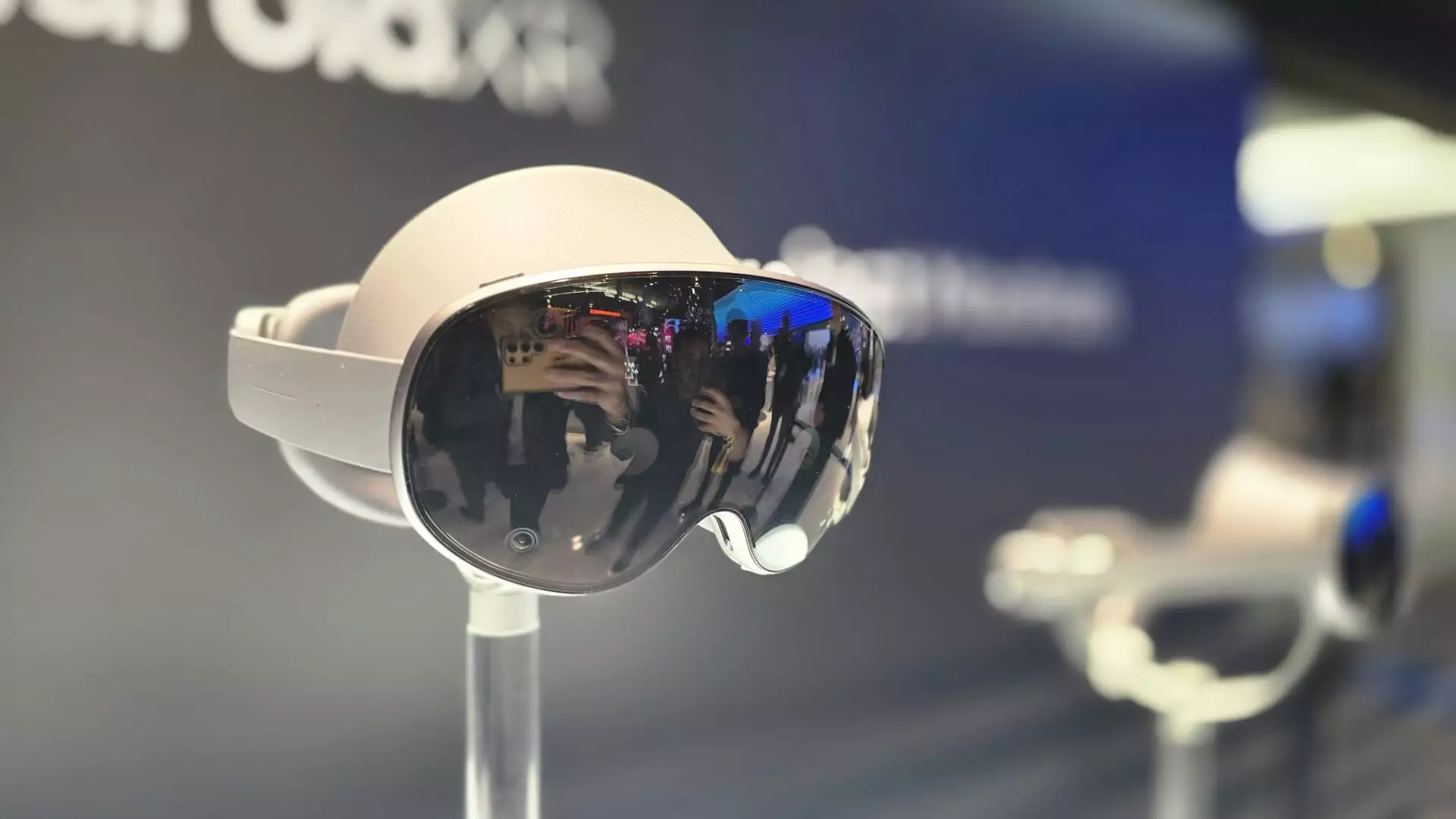Samsung is taking a bold leap into the world of extended reality (XR) with its upcoming Project Moohan headset, set to shake things up in a competitive market dominated by Apple’s rather opulent Vision Pro. While Apple has positioned its offering as a high-end solution at $3,500, Samsung’s entry into this space is not just a response but a strategic maneuver towards carving out a distinct identity in XR technology. The fight for supremacy in this burgeoning sector isn’t merely about product features; it’s about vision, accessibility, and the extent to which technology can bolster our everyday experiences.
As the XR landscape gains traction, one question looms large: can Samsung capture a substantial market share and redefine consumer expectations? Companies that once dominated the virtual reality (VR) landscape—think Meta and Qualcomm—are now grappling with the realization that immersive experiences might not be enough to wield an influential presence when competing against deep-pocketed adversaries like Apple. Samsung’s strategic partnerships with tech giants Qualcomm and Google could mean a shift toward a multifaceted ecosystem, potentially positioning the Korean brand favorably in the upcoming XR era.
Much remains shrouded in mystery surrounding Project Moohan, but several intriguing elements have emerged. The headset features four front-facing cameras and touch controls, hinting at advanced interactivity possibly rivaling even Apple’s offerings. By integrating Google’s Gemini AI, Samsung envisions a seamless conversation user interface, allowing users to traverse various applications through natural dialogue. This forward-thinking approach reflects a broader trend that recognizes the importance of intuitive usability in tech design.
But is technological intelligence, as espoused by Samsung executives like Patrick Chomet, enough to guarantee success? The heavy emphasis on user intention suggests a paradigm shift from mere visual fidelity to a robust, user-centered experience. For Samsung, relying solely on advanced vision capabilities could lead to a flawed product if intelligence isn’t seamlessly integrated into the interface. As consumers become increasingly discerning, the failure to understand this dynamic could bury an otherwise promising venture.
As we peer into the crystal ball of Samsung’s future, it becomes apparent that the company is not just launching a headset; it’s promoting a lifestyle change. Samsung’s ambitions reflect a broader societal trend where the line between the digital and physical worlds continues to blur. The integration of XR into daily life holds immense promise—think smart glasses that could one day translate languages in real-time or provide contextual information like navigation directions without the invasive nature of a bulky headset.
However, the implementation of multiple devices raises another compelling question: Are we really ready to embrace this future? Chomet’s insights hint at an ecosystem where smartphones remain central for a while longer, but how much more can we juggle before the burden of digital life outweighs its benefits? In a world inundated with devices, our attention spans already stretched thin, the quest for enhanced productivity through XR may backfire if it leads to cognitive overload.
Samsung isn’t alone in the mixed-reality arena; firms like Meta and XReal are also investing heavily in augmented reality solutions. The urgent race among tech titans to dominate this evolving sector is reminiscent of the smartphone wars. Samsung’s prior ventures into VR may have floundered due to a lack of consumer interest, but now, buoyed by technological advancements and collaborative efforts, they are armed with fresh insights that could tilt the odds.
Yet, crystalizing a future where XR becomes integral to our everyday lives is fraught with challenges. Samsung’s ambition to deliver a genuinely transformative product hinges not only on technological advancement but also a profound understanding of societal needs. Will Project Moohan meet consumer expectations for accessibility, affordability, and functionality? Or will it simply join the ranks of overhyped technologies that failed to deliver?
With ongoing discussions regarding smart glasses, a segment that could potentially slip beneath the radar of Project Moohan, Samsung might be building towards a broader vision. While traditional headsets offer a more immersive experience, smart glasses could deliver much-needed convenience, allowing users to engage with digital content in a less intrusive manner. The aforementioned slide from the S25 series presentation suggests that smart glasses could emerge as a viable alternative to cumbersome headsets.
But challenges remain. Smart glasses have historically struggled to find their footing in the consumer market, often dismissed as impractical or overly niche. Samsung’s existing consumer base may provide a launchpad, yet without substantial consumer buy-in, this endeavor may falter. Additionally, a skeptical public faced with endless advertising promises will likely demand genuine utility before enthusiastically adopting more devices.
The future of Samsung’s Project Moohan is exciting but uncertain. As poised as the company may be for success, its effectiveness hinges on navigating through consumer expectations, technological limitations, and competition in a rapidly evolving marketplace.

